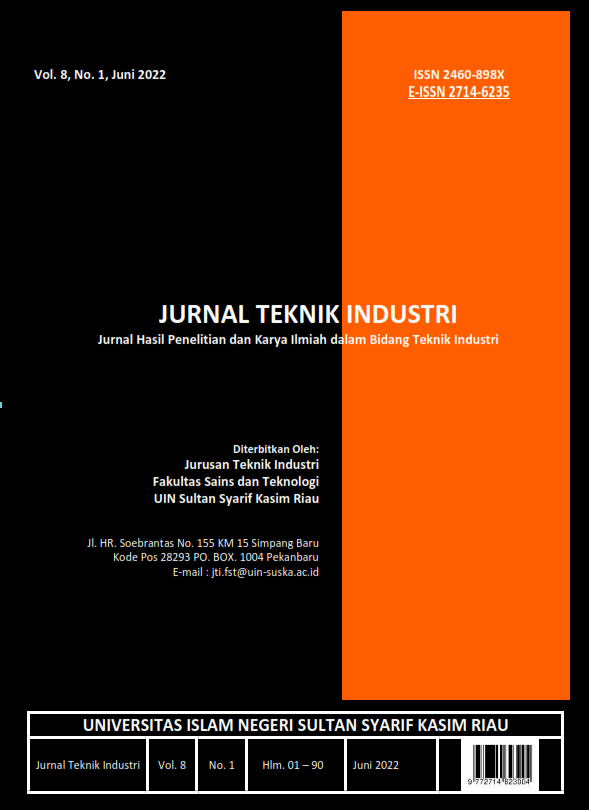Application of SPC and FMEA Methods to Reduce the Level of Hollow Product Defects
DOI:
https://doi.org/10.24014/jti.v8i1.16681Abstract
PT. Surya Baja Pipa Indonesia (SBPI) is a manufacturing company that produces hollow and pipe from rolled iron plate. The production data showed that during January up to October 2021 there were still defects products with the percentage greater than 5%, the specified tolerance limit for defects. In order to maintain quality and increase production efficiency, PT. SBPI strives to reduce the defect rate. This study aims to reduce the level of defect by using Statistical Process Control methods and the Failure Mode and Effects Analysis (FMEA) method to analyze the level of the worst defects by finding the highest damage value Risk Priority Number (RPN). Histogram showed that the biggest defect occurs in welding (7,51%). Analysis using Fishbone diagram found that the welding defect mostly occur due to human factor/workers, machines, methods, materials, and the environment. The result of FMEA method analysis showed machine setting had the highest RPN and became the first priority to solve. It happened because there is no SOP yet that contains definite engine parameters, such as engine speed and voltage. Based on these results, this study suggests companies to prepare SOPs to be a guide for operators at work.
Downloads
Published
Issue
Section
License
Authors who publish with Jurnal Teknik Industri: Jurnal Hasil Penelitian dan Karya Ilmiah dalam Bidang Teknik Industri agree to the following terms:
1. Authors retain copyright and grant the journal right of first publication with the work simultaneously licensed under a Creative Commons Attribution-NonCommercial-ShareAlike 4.0 International License (CC BY-NC-SA 4.0) that allows others to share the work with an acknowledgment of the work's authorship and initial publication in this journal.
2. Authors are able to enter into separate, additional contractual arrangements for the non-exclusive distribution of the journal's published version of the work (e.g., post it to an institutional repository or publish it in a book), with an acknowledgment of its initial publication in this journal.
3. Authors are permitted and encouraged to post their work online (e.g., in institutional repositories or on their website) prior to and during the submission process, as it can lead to productive exchanges, as well as earlier and greater citation of published work (See The Effect of Open Access).
